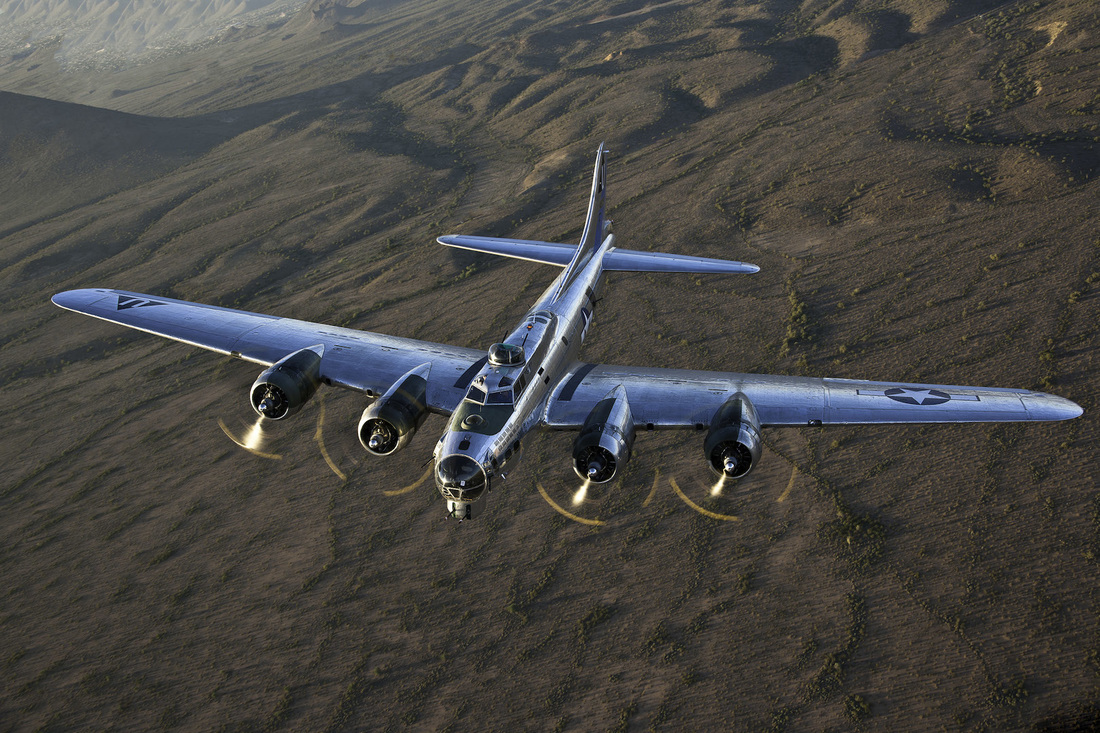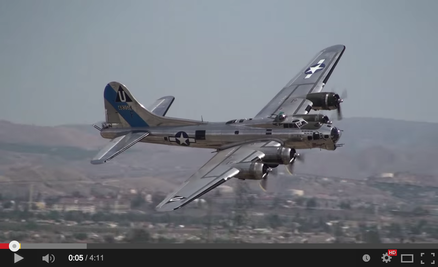Presented by |
Sentimental Journey B-17Needing to fill the Army Air Corps requirement for a long range, high-altitude, daylight bomber, Boeing developed the then Model 299, powered by four 750hp Pratt & Whitney Hornet engines. When the model crashed after take-off on its second flight, Boeing was technically disqualified from the contract, the but Army continued and ordered later models designated YB-17 and YB-17A. By the end of March 1940, the first production batch of B-17Bs were delivered to the Army Air Corps.
The final version, the B-17G model, boasted a heavy defense of 13 .50 caliber Browning machine guns, and could carry a bomb load of 8,000lbs. The B-17G entered service in fall of 1943, and become the most produced model with over 8600 built. Four Wright Cyclone R-1820-97 radial engines with 1200hp each gave the B-17G a top speed of over 280mph (240 knots). Considered by most to be the most popular and recognized aircraft of WWII, the B-17 helped win the war in Europe by dropping over 640,000 tons of bombs. Specifications General Characteristics Type--Heavy/Strategic Bomber Manufacturer--Boeing Maiden Flight--28 July 1935 Introduced--April 1938 Theatre of War--World War II Number Produced--12,731 Status--Retired in 1968 Crew10 Dimensions Wingspan--103 ft 9 in Length--74 ft 4 in Height--19 ft 3 in Empty Weight--36,134 lbs Max Takeoff Weight--65,500 lbs Fuel Capacity/Consumption--2,780 US Gallons in the wings/200 US Gallons per hour Oil Capacity--37 gallons per engine PerformancePower Plant--(4) Wright R-1820-97 Cyclone Turbosupercharged Radials Horsepower--1,200 hp Maximum Speed--263 knots (302 mph) Service Ceiling--36,400 ft Rate of Climb--900 ft/min Range--3,259 nm (3750 mi) Armament--Guns(13) 0.50in (12.7mm) M2 Browning Machine Guns Payload--Up to 8,000lbs ordance (short range missions of less than 400mi) Up to 4,500lbs ordance (long range missions of up to 800mi) |




